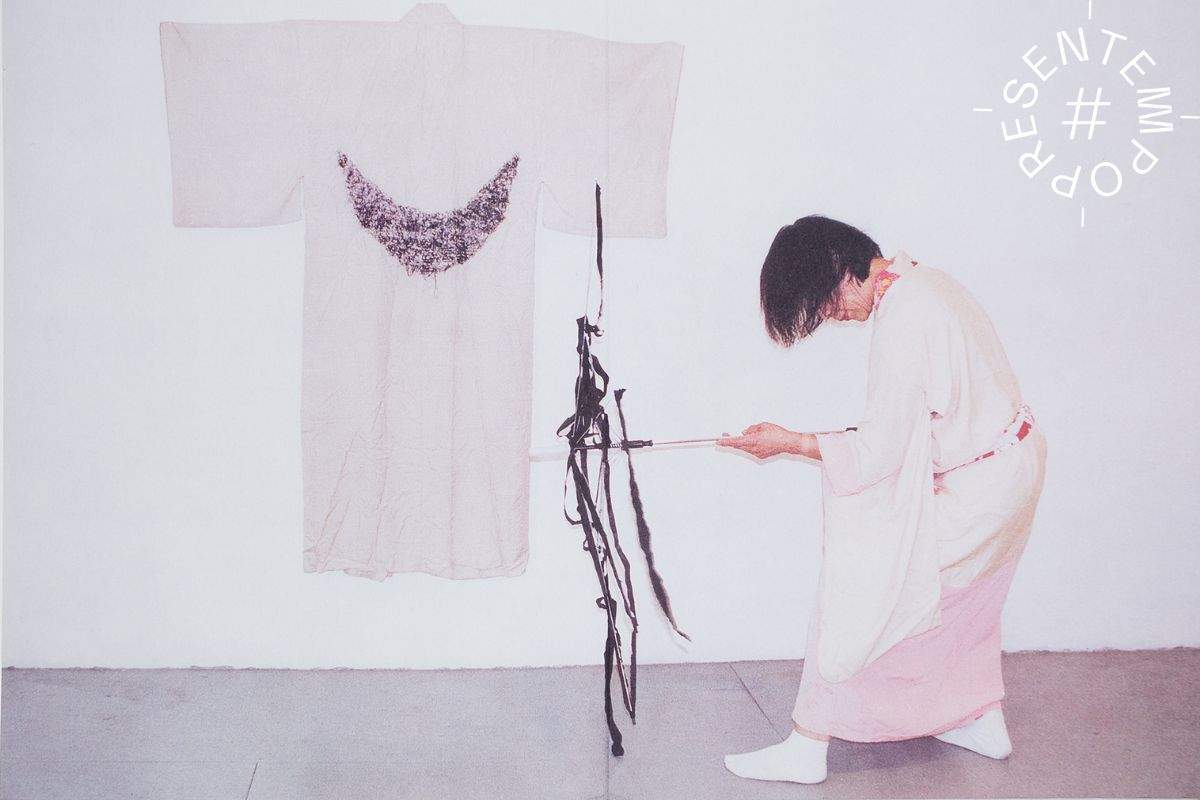Turin, the Museum of Oriental Art brings the collection into dialogue with the works of Kazuko Miyamoto
A delicate kesa, the Buddhist ritual cloak, next to a minimal kimono made of knotted rope; the imposing structure of samurai armor next to videos of the performances Umbrella dance and In the garden; nineteenth-century wooden prints in dialogue with photographs depicting kabuki actors: in the MAO’s new Japanese gallery display, which juxtaposes works from the permanent collections and works by Japanese artist Kazuko Miyamoto (Tokyo, 1942), different eras and languages coexist, offering distant but collateral points of view on recurring and layered themes and symbols. Contemporary Monogatari: New Japanese Narratives, which opens to the public on Dec. 12, curated by director Davide Quadrio together with the MAO staff and realized in close dialogue with the director of the Madre Museum in Naples, Eva Fabbris, offers an exploration of Kazuko Miyamoto’s artistic practice in dialogue with the spaces and works on display on the second floor of the MAO’s Japanese gallery. In this exhibition project, the present infiltrates a constellation composed of objects from the past that, through contamination, find new life and new possibilities of meaning.
The rearrangement opens with Miyamoto’s work Kimono/cords (2003), a stylized kimono silhouette made of rope, a poor material emblematic of the essentiality of minimalism, set against the silky, refined materiality of the kesa from the museum’s permanent collections, three 19th-century specimens decorated with abstract, geometric elaborations of motifs inspired by the natural world, such as flowers and clouds.
The juxtaposition refers to the two garments’ craft production methods: similar to Buddhist ritual cloaks in fact, kimonos are also traditionally made by assembling rectangles of silk. Their shape is not meant to accommodate the body’s curves, but to envelop them, concealing them. Through the creative process, Miyamoto strips away the original structure of the kimono, one of Japan’s most powerful and universal symbols, and, through an extreme gesture of subtraction, transforms it into an anatomical subject, a skeleton that, however, of the original subject retains the profound essence. The recurring theme of the kimono, as essential to Miyamoto’s performance practice as those of ropes, umbrellas and nature, also returns in the artist’s sketchbook, which brings together photographs and reproductions of 22 works, and in the drawings organized here in the form of a picture gallery: through drawing, the artist’s favorite language because of its immediacy, a symbolic alphabet comes to life with which to outline a narrative that unites traditional Japanese culture, daily life, and diasporic identity in an indissoluble tangle.
In Miyamoto’s work, the recovery of memory and Nipponese traditions also returns in the videos In the garden (2014) and Umbrella Dance (2004), which reinterpret some of the most characteristic elements of traditional Japanese iconography. The two works are juxtaposed with the imposing presence of samurai armor and the delicacy of late 19th-century photographs depicting kabuki theater actors, female beauties (bijin) immersed in colorful gardens and maidens intent on composing ikebana.
Placed next to the latter is the work Ladder and Branches (2010), an ephemeral structure with organic and archetypal forms - part ladder, part nest, a clear reference to shimenawa, the ropes used in Shinto purification rituals-which underscores the artist’s constant aptitude for connecting, linking, healing the rifts between art and life, between distant times and spaces with irony and spontaneity.
Continuing ideally with the narrative started in the main room, the corridor dedicated to ukiyo-e hosts a wide selection of prints belonging to the museum’s collections and depicting kabuki actors, in which echo the themes and gestures of theater, dance, and performance that emerge like underground resurgences also in numerous works by Miyamoto.Finally, the tea room that closes the Japanese section of the MAO houses the work Kimono with ropes and sticks (2004): the dialogue between full and empty that characterizes the first part of the exhibition project returns here with new force, also underscoring the symbolic value of the circularity linked to ki, the life breath that permeates space and body and is at the center of Kazuko Miyamoto’s expressive research.
For all information, you can visit MAO’s official website.
 |
| Turin, the Museum of Oriental Art brings the collection into dialogue with the works of Kazuko Miyamoto |
Warning: the translation into English of the original Italian article was created using automatic tools. We undertake to review all articles, but we do not guarantee the total absence of inaccuracies in the translation due to the program. You can find the original by clicking on the ITA button. If you find any mistake,please contact us.



























